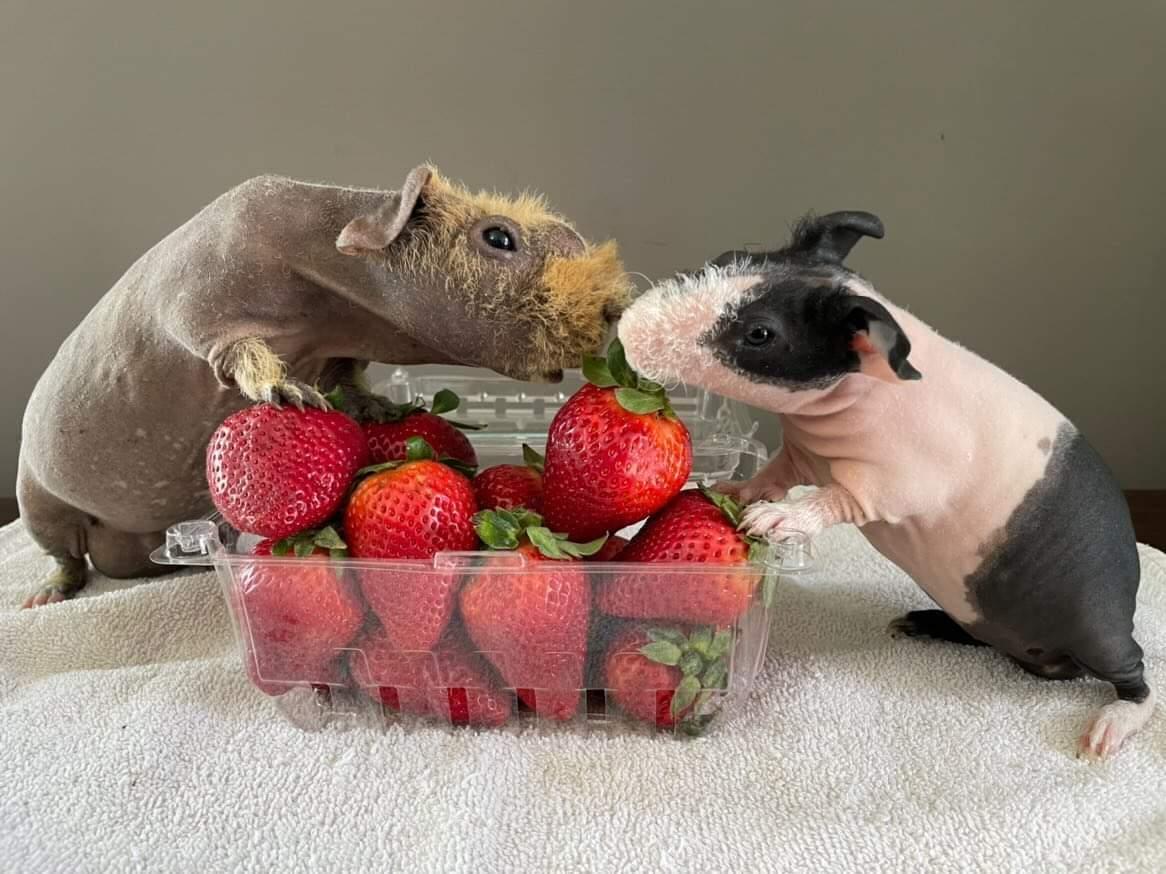June 28th, 2019
Guinea Pig
If you are looking for a small companion for your child instead of dog or a cat, you might consider a guinea pig. They are entertaining, teach children pet care responsibilities, and are less likely to be squeezed, like a hamster, by tiny unknowing hands.
Even though they are tiny and cute, there are things that you need to know before deciding to add one to your family.
Diet:
Guinea pigs are herbivores and, as a result, their diet needs to consist of at least 80 percent of grasses. Quality hay also needs to be available to your pig at all times. This allows them to “graze” and provides enrichment when you are not able to socialize with them. Hay, such as timothy, or orchard grass brome are good options and your pig will let you know which they prefer.
Alfalfa hay should be avoided since it is high in calories as well as calcium. If fed, you could end up with a chubby guinea pig or your pig could develop bladder stones, which can be very serious.
Guinea pigs cannot produce their own vitamin C and need to have it added to their diet to meet daily requirements. Vitamin C drops that are formulated for guinea pigs can be added to their water, or it can be added through their diet alone. Some examples of food that are rich in vitamin C include; oranges, kale, mango, pineapple and broccoli. Be sure to clean fruits and veggies well and do not leave them in their cage too long, allowing them to mold. Try not to add too many new foods at once, as this could cause your pig to get diarrhea.
Guinea pig pellets can be given in limited amounts. Be sure to only use pellets that are fortified with Vitamin C and not rabbit pellets.
Housing
When selecting a cage for your guinea pig, make sure it is large enough to keep them comfortable, with a solid floor and good ventilation. One guinea pig requires approximately a 7.5 square foot cage minimum (generally 30″ x 36″ is a good size) but more is better. Two guinea pigs require 7.5 square foot minimum, but 10.5 square feet is preferred (generally 30″ x 50″ is a good size). Guinea pigs can develop respiratory problems or bumblefoot with poor dirty flooring.
Bedding needs to be clean and free of dust. This is why straw bedding should not be considered, as it could cause an impaction in a male’s genitalia.
Guinea pigs also prefer to be housed in two or more. They are very social and do well living with a partner they’ve grown up with. If you do not plan on neutering or spaying your pigs, it is best to keep two males or two females together.
Veterinary Visits
Even though guinea pigs are tiny, they still need veterinary care. A veterinarian can monitor your pig’s body condition, teeth health and determine if any intervention needs to be done. Any concerns can be brought up and discussed during your visit.
If well socialized, your child’s guinea pig can be a wonderful companion and provide several years of enjoyment.

